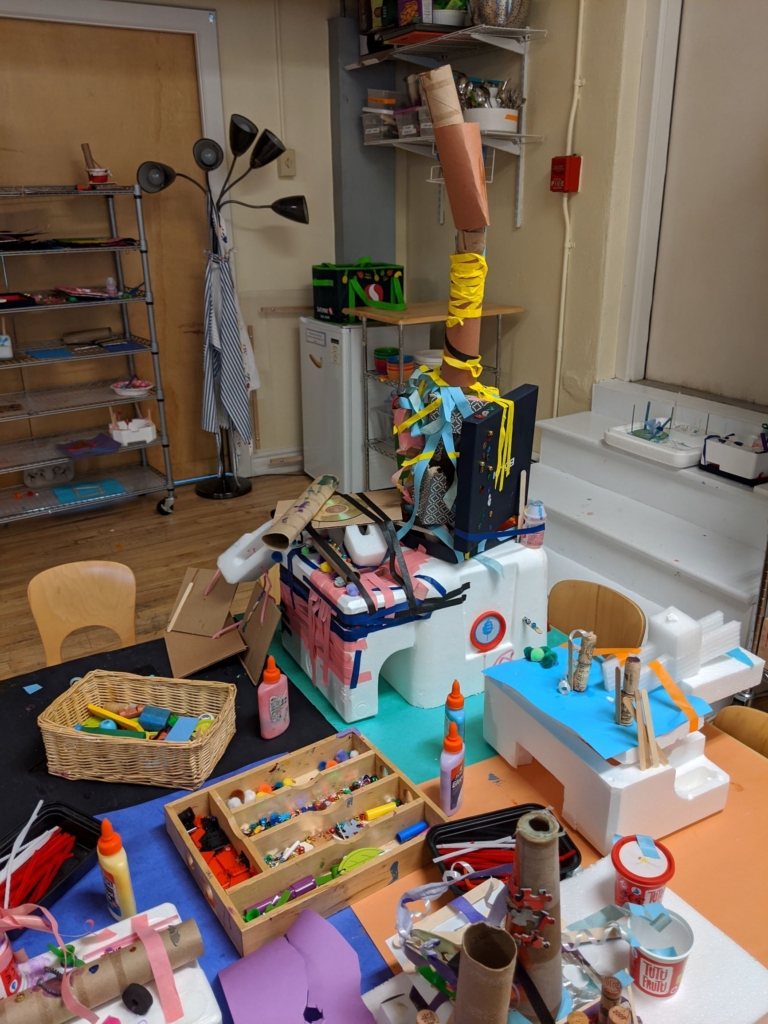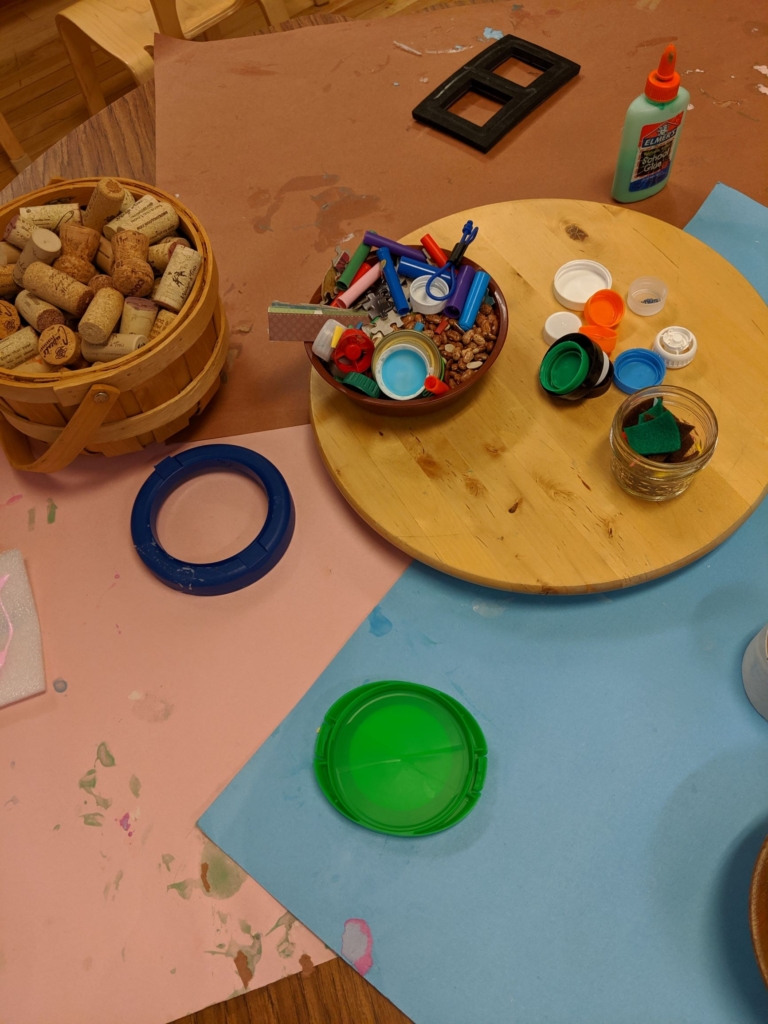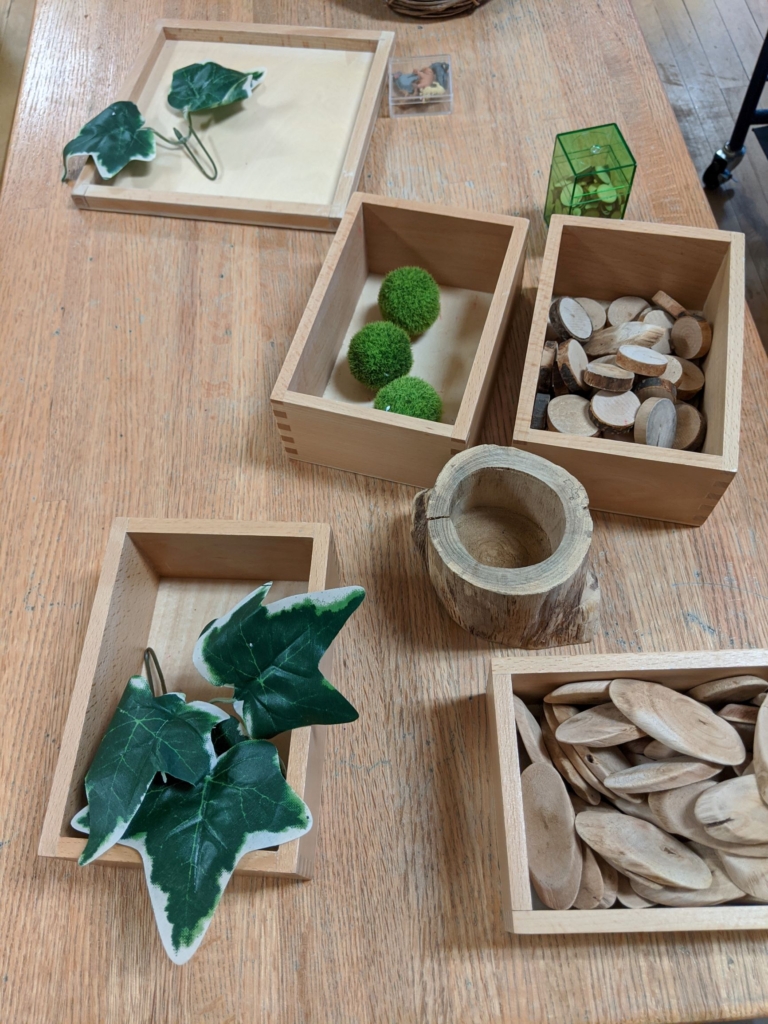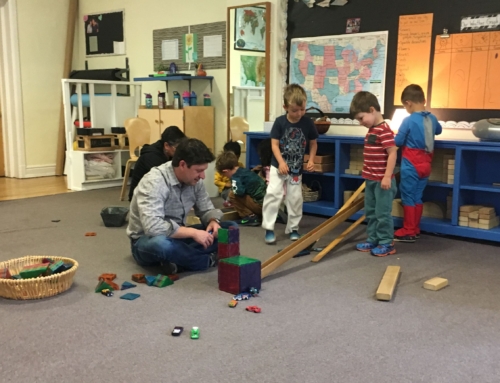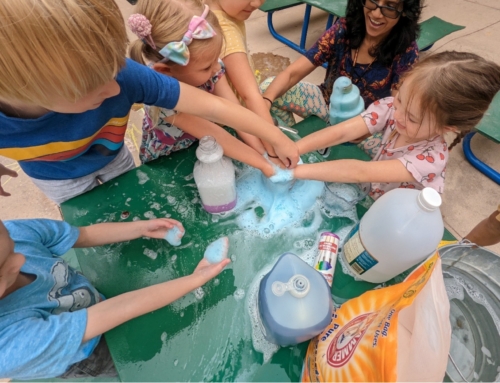*As a tribute to our 55th anniversary we uncovered the following piece, penned by Montview co-founder June Wood many years ago.
By: June Greene Wood, Co-founder of Montview Community Preschool & Kindergarten
Most preschool children today, whether at home or in a play, day care or school setting are exposed to creative materials, such as crayons, several kinds of papers, paints, colored markers, pencils, play doh and children’s scissors. They have tables, desks, and easels on which to spread out their work. In addition, they have adult help in preparing for their arts and crafts play and appropriate supervision so that they understand what surfaces may be decorated or cut and what is off limits.
The Construction, Discovery and Invention Box is simply a collection of materials, “good junk” and tools ready and waiting for the creative attentions (and intentions) of children of about five or older. The box’s contents are designed to be used mostly independently in an area where children can work comfortably and generate their own projects. The work area or time should be protected from the ravages of toddlers or younger siblings, who aren’t yet ready to use the contents of the box safely or appropriately.
The box, itself, could be a large, sturdy cardboard box or it could be a wide and deep see-through plastic storage container. The following basic supplies are a good beginning:
Pencils
Erasers
Pens
Glue or glue sticks
Paper clips
Scissors
Scotch tape
Masking tape
Stapler and staples
Staple remover
White-Out
Rubber bands
String
Ruler and / or measuring tape
(All of the above, which are mostly office supplies, might be stored in a shoe box or clear plastic storage box of similar size)
Washable paints of the consistency usually used for posters and appropriate brushes
Watercolor tin with watercolor cakes and brush
Crayon box with many colors
Colored chalk, sized for paper (rather than concrete)
White and manila art paper
Colored construction paper
Oak tag (for book covers or entire books)
Tracing paper
Large newsprint paper
Origami paper
Graph paper with fairly large squares
Lacey papers, such as those often used in making valentines
Saved flat cardboard of various sizes
Saved cardboard tubes of various sizes
Small pieces of wood
Glue for Wood
Collection of small boxes of various shapes
Paper plates of various sizes (un-plasticized)
Paper cups
Plastic straws
Popsicle sticks
Pipe cleaners
Cotton balls
A number of prepared empty books of various sizes for children to write in and illustrate — or illustrate without words
A collection of bits of ribbon of various colors and sizes
Bits of rickrack, dressmaking trims of various colors, and lace
Assorted pieces of colorful and interesting cloth
Odds and ends of colorful yarn
Plastic bubble wrap
Aluminum foil
Corrugated cardboard
Safety pins
Pieces of felt
Flat buttons
Stickers
Small smoothly rounded rocks (often used with floral arrangements, but are wonderful when used to make dinosaur or other habitats)
Clay, which can be hardened by baking
Play doh
Colorful feathers
Small-to-moderate sized mailing boxes, which are great for doll houses, kennels, schools, stores, fire stations, or you name it (If a child wants windows i n a cardboard building, he or she can draw the outlines of windows, and an adult can cut them out with a sharp knife
Small plastic containers with lids
Old catalogs for cutting or ideas, especially toy catalogs
In order to inspire your child and help him to get started, it is helpful to enclose a few items pertaining to individual special interests, such as small knights or soldiers, small cars and trucks, dinosaurs, dogs, horses, wild animals, farm animals, or small dollhouse family figures or community helpers. Some children become more creative if they find a few simple projects with simple directions for starters, which can be selected and completed before they rely on their own ideas and imagination to keep them engaged.
In my experience, Construction, Discovery and Invention Boxes tend to be around for many years and sometimes need replacements of crucial supplies. During the elementary school years the box may provide inspiration, confidence and materials for individual school projects, such as dioramas. I’ve seen the original “box” replaced by a clear, plastic, bureau-like container for better organization. The addition of more effective tools, such as sharper, pointed scissors, super glue, and perhaps a hammer and nails is appropriate for responsible, older children.
The main thing to remember is that the use of the box should be fun, and projects should originate with the child. Adults are responsible for background awareness of what children can handle safely and appropriately, and for using their imagination to provision and store the box appropriately.

